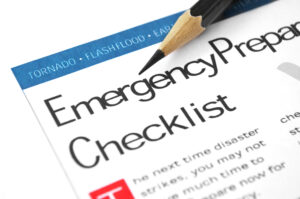Commercial Disaster Preparedness and Management
 What do you do in a given crisis? More importantly, what do you do if the same disaster instead happens to your business? To understand and ready your business, you have to understand two key concepts: disaster preparedness and emergency management.
What do you do in a given crisis? More importantly, what do you do if the same disaster instead happens to your business? To understand and ready your business, you have to understand two key concepts: disaster preparedness and emergency management.
Disaster Preparedness
The most important part of the process is planning for it. The hard work pays for itself in the event of a crisis, as well as with hidden upsides (see below). To be prepared for disaster you need to elect management to administer the planning and be the director in the event of an emergency, identify your requirements for the program, plan your program to address the risks, and then implement and test your program. More information about the process can be found at the Small Business Administration’s Disaster Planning section.
The Hidden Upsides of Disaster Planning
The first thought when planning for a business should be to protect your business and its assets from disasters and speed up disaster recovery. However there are multiple positive side-effects from having a documented disaster plan in place. The following are suggestions from FEMA, especially useful for when making a case to your company to plan ahead.
- It helps companies fulfill their moral responsibility to protect employees, the community, and the environment.
- It facilitates compliance with regulatory requirements of Federal, State, and local agencies.
- It enhances a company’s ability to recover from financial losses, regulatory fines, loss of market share, damages to equipment, or products or business interruption.
- It enhances a company’s image and credibility with employees, customers, suppliers, and the community.
- It may reduce insurance premiums.
Emergency Management
Emergency management is your company’s response to an emergency, the ability to mitigate, to respond, and to recover from an emergency. If emergency preparedness is the planning, emergency management is the execution. During the planning stage you will select someone to be the manager in the event of the situation, known as the Emergency Director. During a business it is their responsibility to oversee the situation, including managing emergency resources, collecting information, and decision making. This is collectively known as Direction and Control.
 Common Parts of a Direction and Control Plan
Common Parts of a Direction and Control Plan
During a disaster the Emergency Director and the team assigned to carry out tasks (usually referred to as the Emergency Operations Ground) work together to request, access, and respond to the situation. A response to a disaster from the Disaster Management Team will look something like this:
- The emergency team convenes.
- They assess the situation, break out the appropriate plan, and make appropriate immediate emergency responses.
- Account for all employees and visitors. “Employees” may include students, patients, or other persons whose care you are required for.
- Acquire all the information for the situation, including damage reports.
- Implement appropriate emergency operations using this information.
- Continue to update situational information and coordinate with city and state emergency response personnel (police, medical, and national guard).
- Control internal and external communications. It is important to release only factual information, using official channels.
- Plan and implement post-crisis restoration.
Disasters happen, and a part of any plan of recovery should include insurance against disasters for your business. If you’re interested in insuring against flood, fire, earthquake, or even cyber disasters, please contact H & K Insurance. We’ll help you plan your response to these disasters and the types of coverage you need.
